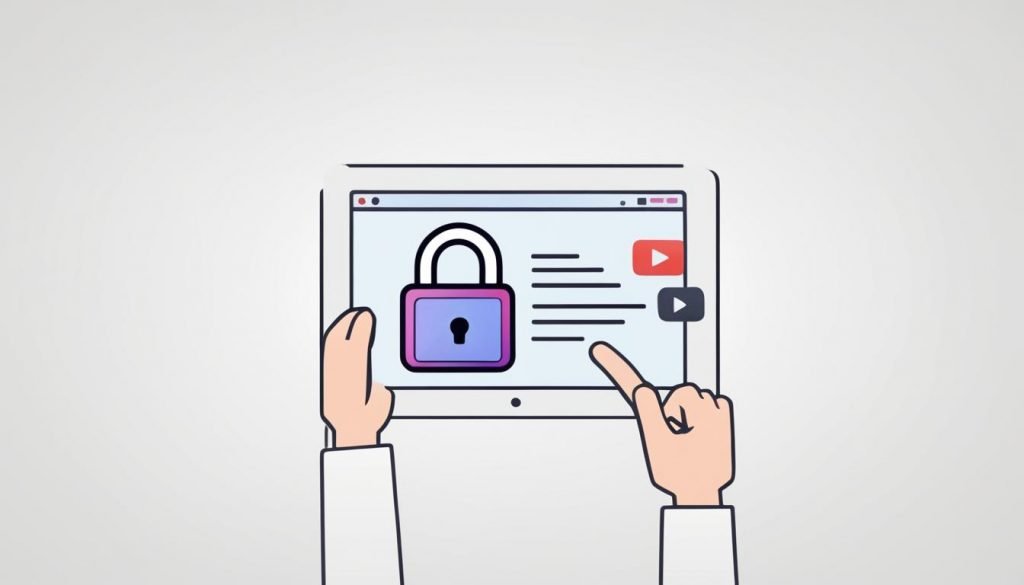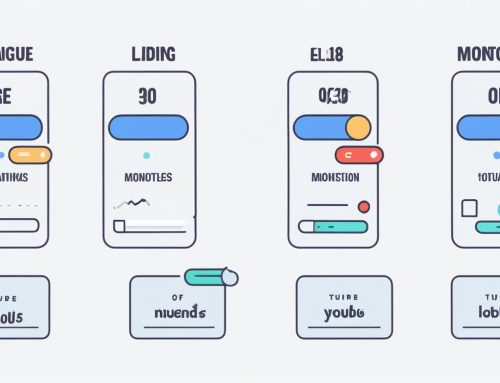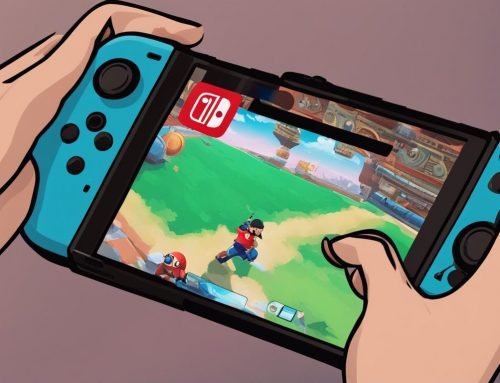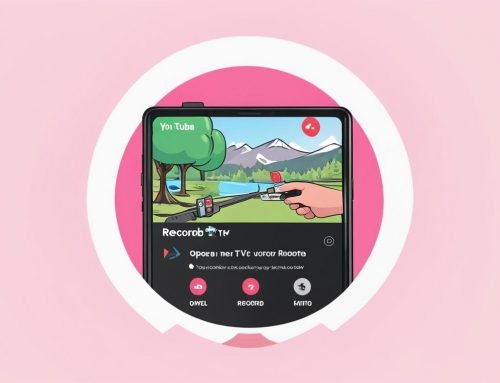Granting access to your YouTube channel is an important aspect of collaboration and channel management. With channel permissions, you can give other users different levels of access to your channel data, tools, and features.
This ensures secure and controlled collaboration without the need to share sensitive sign-in information. In YouTube Studio, you can invite people to help manage your channel and assign them roles such as owner, manager, editor, editor (limited), or subtitle editor.
These roles determine what actions the users can perform on the channel, such as managing live streams, deleting content, or editing channel details.
Key Takeaways
- Granting access to your YouTube channel allows other users to collaborate and help manage channel data, tools, and features.
- Channel permissions in YouTube Studio enable you to assign roles, such as owner, manager, editor, etc., to users, determining their actions on the channel.
- Collaboration through channel permissions offers a secure and controlled way to work on your YouTube channel without sharing sensitive sign-in information.
- Inviting users and assigning roles can be done in YouTube Studio, making it easy to manage access to your channel.
- Understanding and managing brand account roles and permissions is crucial for effective collaboration on your YouTube channel.
Quick Links:
Buy YouTube Views ▸ Buy YouTube Comments ▸ Buy YouTube Likes ▸ Buy YouTube Subscribers
How to Give Access to a YouTube Channel
To add users to your YouTube channel and enable collaboration, follow these steps:
- Step 1: Sign in to your YouTube account and navigate to YouTube Studio.
- Step 2: Click on “Settings” in the left-hand menu.
- Step 3: Select “Permissions” from the dropdown menu.
- Step 4: Click on the “+ Invite” button to add a new user.
- Step 5: Enter the email address of the person you want to grant access to.
- Step 6: Choose the role you want to assign to the user (owner, manager, editor, editor (limited), or subtitle editor).
- Step 7: Click on the “Invite” button to send the invitation.
This will send an email invitation to the user, allowing them to access and collaborate on your YouTube channel with the assigned permissions. Once the invitation is accepted, the user will be able to perform the designated actions based on their assigned role.
Remember to adjust the permissions and roles of users as needed to maintain control over your channel’s data and content. Collaboration can greatly enhance the growth and success of your YouTube channel, so make sure to leverage the power of granting access and permissions to trusted individuals.
Collaboration Made Easy
Granting access to your YouTube channel opens up opportunities for collaboration with other content creators. By adding users to your channel and assigning them specific roles, you can work together to create engaging content, manage live streams, optimize video performance, and more.
| Role | Permissions |
|---|---|
| Owner | The owner has full control over the channel, including managing permissions, editing channel details, deleting content, and accessing analytics. |
| Manager | Managers have similar permissions as owners, but they cannot delete the channel or remove other owners. |
| Editor | Editors can upload, edit, and delete videos on the channel, but they cannot manage permissions or access analytics. |
| Editor (Limited) | Editors with limited access can only edit video details and thumbnails, without the ability to upload or delete videos. |
| Subtitle Editor | Subtitle editors have the sole permission to create and edit subtitles for videos on the channel. |
By assigning the appropriate role to each user, you can ensure efficient collaboration while maintaining control over your YouTube channel’s content.
How to Remove Access to Your YouTube Channel

To maintain control and ownership of your YouTube channel, it’s important to know how to remove access for users. Whether you need to revoke access from a collaborator or terminate a partnership, you can follow these steps to manage YouTube channel access and ensure the security of your channel.
- Go to your YouTube Studio dashboard.
- Click on the Settings tab in the left sidebar.
- Select “Permissions” from the menu options.
- You will see a list of users who have access to your channel. Locate the user you want to remove.
- Click on the three dots next to the user’s name.
- Choose the “Remove” option from the dropdown menu.
- A confirmation dialog box will appear. Click “Remove” to confirm the action.
By following these steps, you can easily remove access to your YouTube channel for any user. This ensures that only trusted individuals have control over your channel’s content and settings.
Note: Removing access to your YouTube channel will revoke all privileges and permissions for the user. They will no longer be able to perform any actions or make changes to your channel.
YouTube Channel Access Roles
| Role | Permissions |
|---|---|
| Owner | Full control over the channel. Can add or remove other users, manage channel details, and delete content. |
| Manager | Similar to owners but cannot add or remove other owners or transfer ownership. |
| Editor | Can edit channel details, upload and delete videos, and manage comments and playlists. |
| Editor (Limited) | Restricted editing access. Can edit video details, add subtitles, and respond to comments. |
| Subtitle Editor | Can create and edit subtitles for your videos. |
Having control over who can access and manage your YouTube channel is crucial for channel ownership and security. By removing access for users who no longer require it, you can maintain the integrity of your channel and protect its content.
Managing Brand Account Roles and Permissions
If your YouTube channel is associated with a Brand Account, you have the ability to efficiently manage user access through channel permissions. Brand Account roles provide different levels of access to your channel, allowing for effective collaboration and delegation of tasks. These roles include the owner, manager, and communications manager. Understanding these roles and their specific responsibilities can help you streamline your channel management process.
Owner
The owner role grants the highest level of access and control over the YouTube channel. Owners have complete administrative authority to manage all aspects of the channel, including channel settings, videos, playlists, and comments. They can also manage other roles and permissions, invite new users, and remove existing ones. It is crucial to assign this role only to trusted individuals who need full control over the channel.
Manager
The manager role provides considerable channel management capabilities without granting full administrative control. Managers can edit channel details, upload and delete videos, and moderate channel comments. While they have significant control over the channel’s content, they do not have the authority to add or remove users, including other managers. This role is suitable for users who require active involvement in content management but not administrative tasks.
Communications Manager
The communications manager role is specifically designed for users responsible for managing audience engagement and communication. Users with this role have the ability to respond to comments, share public updates on the channel, and interact with subscribers. However, communications managers do not have access to channel settings or video editing capabilities. This role is ideal for social media managers or individuals focusing on community engagement.
Assigning appropriate roles to users ensures efficient collaboration and proper division of responsibilities within your YouTube channel. By leveraging the different levels of access provided by Brand Account roles, you can effectively manage user permissions and streamline your channel management process.
| Role | Access and Responsibilities |
|---|---|
| Owner | Full administrative control, including channel settings, videos, playlists, comments, and user management. |
| Manager | Content management authority, including video upload, deletion, comment moderation, and channel details editing. Cannot add or remove users. |
| Communications Manager | Responsible for audience engagement, comment responses, and public updates on the channel. No access to channel settings or video editing. |
Requesting Admin Access for a YouTube Channel
If you are an agency or freelancer seeking access to a client’s YouTube channel, you will need to request admin access directly from the client. While YouTube does not provide a direct method to do this, you can follow a simple process to acquire the necessary permissions.
Firstly, communicate with your client and request that they manually add you as an admin to their YouTube channel. This can be done by following the steps outlined in the earlier sections of this guide on granting access to a YouTube channel. By adding you as an admin, your client enables you to assist in managing their YouTube channel effectively.
With admin access, you will be able to collaborate with your client more efficiently, providing expertise and implementing channel management strategies. You can assist with tasks such as uploading videos, optimizing content, and analyzing channel performance. Remember to emphasize the benefits of granting you admin access, ensuring your client understands the value you bring to their YouTube channel.
By following this process and establishing admin access, you can work closely with your client to maximize the potential of their YouTube channel. Collaborative efforts enabled through proper access permissions, allow for seamless channel management and significant growth opportunities.
Read More
- How To Get YouTube on Vizio TV
- How To Get The Community Tab on Your YouTube Channel
- How To Remove Pause Button on YouTube
- How to Get a Subscribe Link for YouTube
- How to Get 1080p on YouTube: Quick Guide
- Easy Steps: How to Flip a YouTube Video
- Fix YouTube on Kodi: Quick Troubleshooting Guide
- How to Find URL on YouTube – Quick Guide
- How to Delete Subscriptions on YouTube
- Easy Guide: How To Find Someone’s Email on YouTube



